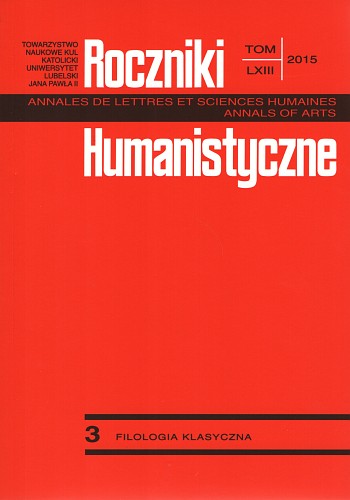Tentative division of Latin adverbs of degree
Tentative division of Latin adverbs of degree
Author(s): Małgorzata GórskaSubject(s): Language studies, Theoretical Linguistics, Philology
Published by: Towarzystwo Naukowe KUL & Katolicki Uniwersytet Lubelski Jana Pawła II
Keywords: comparison;adverbs of degree;indices of gradation;intensity;completeness;sufficiency and excess
Summary/Abstract: The paper is an attempt of dividing Latin lexemes of the nonrelative degree of a property or state, which is expressed by gradable predicates, traditionally called adverbs of degree. The disitnction of four groups of degree indices is proposed, which characterize a property or state according to categories of intensity, completeness, sufficiency and excess, i.e. (1) Indices of intensity: a. intensifiers describing the high degree of a property or state (valde, multum, magnopere/magno opere, admodum, bene, male, sane, plane, non mediocriter, abunde, impense, vehementer, graviter, egregie, eximie, mire, mirifice, mirabiliter), b. disintensifiers describing the low degree of a property or state (non valde, non magnopere, non admodum, male, mediocriter); (2) Indices of completeness: a. describing the complete degree of a property or state (bene, male, plane, admodum, longe, omnino), b. describing the incomplete degree of a property or state (prope, paene, non plane); (3) Indices of sufficiency: a. describing the sufficient degree of a property or state (satis/sat), b. describing the insufficient degree of a property or state (non satis/sat, parum) and (4) Indices of excess: a. describing the excess of a property or state (nimis/nimium, oppido), b. describing the lack of excess of a property or state (non nimis).
Journal: Roczniki Humanistyczne
- Issue Year: 63/2015
- Issue No: 03
- Page Range: 177-198
- Page Count: 22
- Language: English

